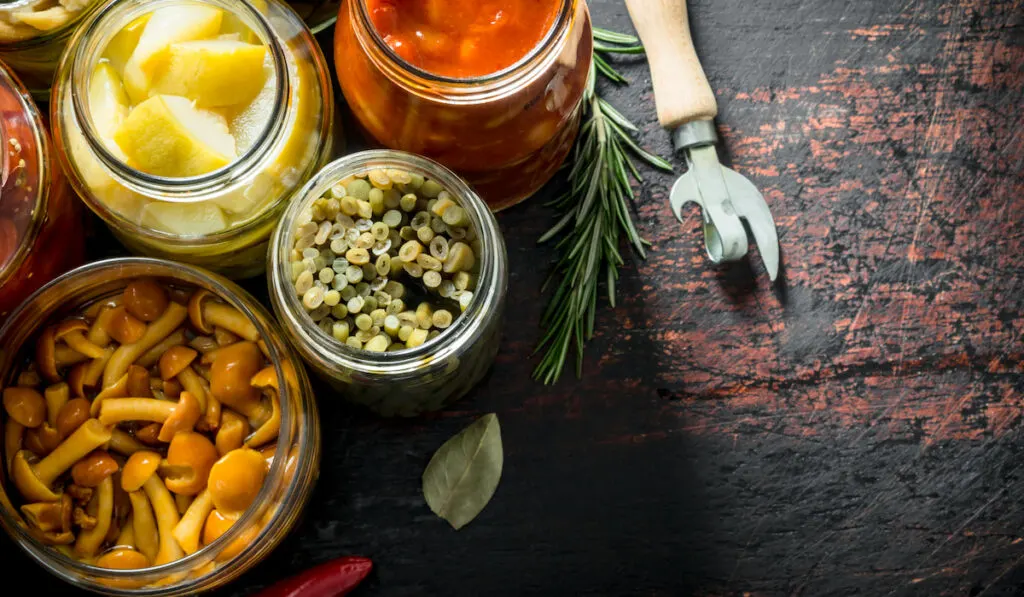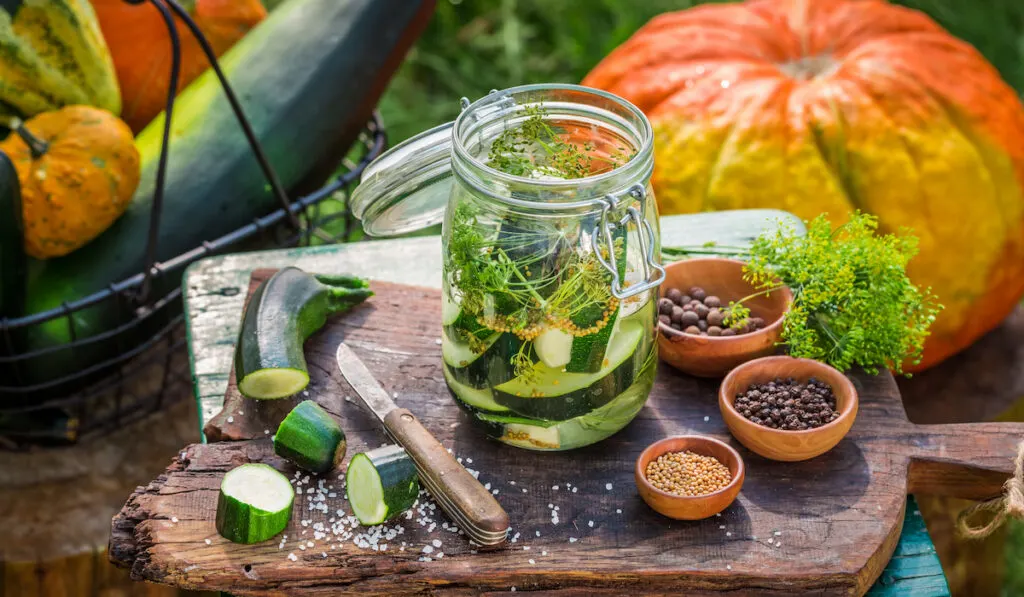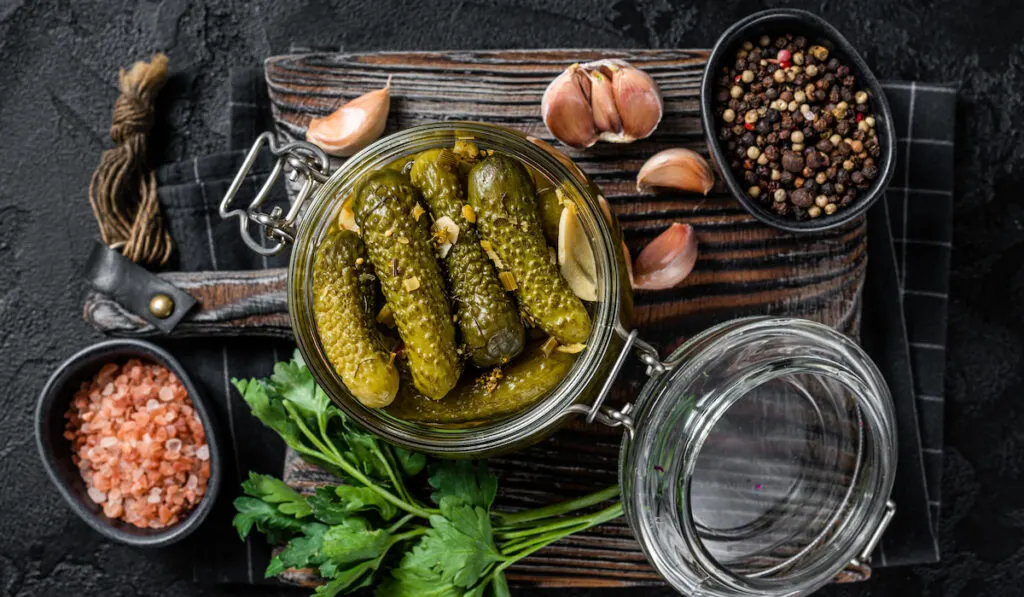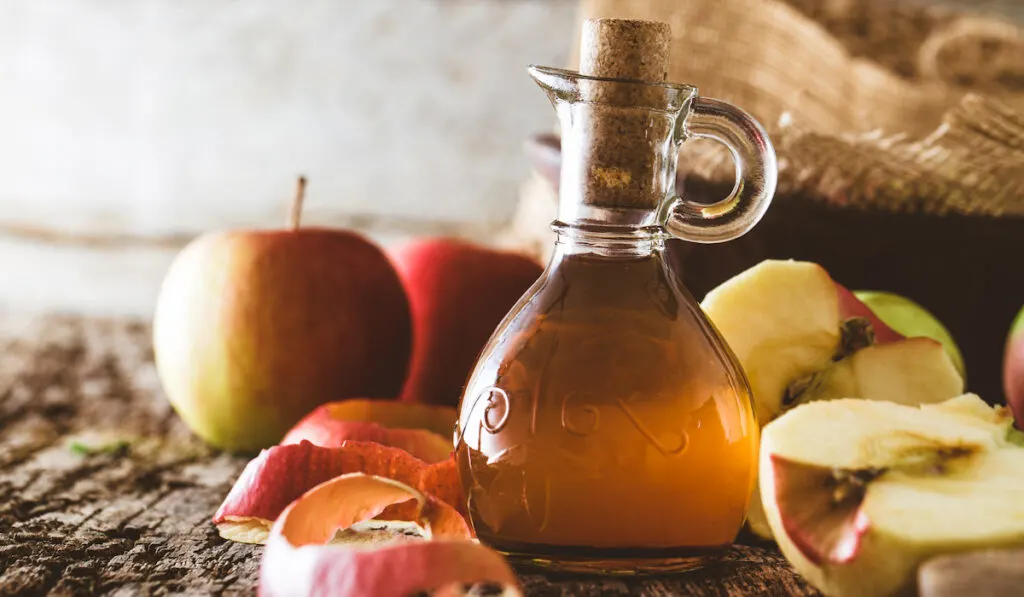There have probably been plenty of times where you probably thought to yourself, “I should start to eat healthier,” so you go to the grocery store and pick out a bunch of great healthy food options only to find your refrigerator filled with rotten veggies a week later.
Even if you had every intention to eat all those veggies, you just didn’t get the chance.
Or maybe you decided that making your own garden would be a great idea and now you have a bunch of amazing vegetables that you don’t want to go to waste.
Whatever your reason for having too many vegetables to handle is, pickling might be a great way to fix your vegetable overload problem without throwing any away.
Let’s take a look at pickling and how you can get started!

Table of Contents
What Is Pickling?
The pickling process has been around for well over four thousand years. The pickling process was invented as a way to extend the lifespan of your food by combining water, salt, vinegar, and a handful of vegetables into a jar.
When food goes through the process of pickling, it doesn’t taste the same way as it did, but sometimes it can taste a little bit better than it did before.
The most important part of the pickling process is the brine. Brine is just water with a heavy amount of salt in it. During the pickling process, it is used to extract water from the food.
What You Will Need
There are many different recipes out there that you can try, but in order to pickle successfully, you are most definitely going to need water, salt, vinegar, a vegetable (or fruit), and a jar.
Sometimes you can try adding different kinds of spices and seasonings for added flavor, but these are the basic ingredients.

What Can You Pickle?
You can pickle just about anything, but not everything will taste good in the end. The most popular thing to pickle is a cucumber which is why we’ve ended up calling pickled cucumbers “pickles”.
Even though cucumbers and pickles are made from the same thing, the pickling process makes the cucumber taste completely different. The texture is still pretty similar, but once the cucumber transforms into a pickle, it tastes sweeter and saltier. This is why some people who like pickles don’t like cucumbers and vice versa.
However, cucumbers aren’t the only thing you can pickle. You can also pickle any other vegetables and or fruits. As odd as it might sound, you can pickle blueberries, watermelon, tomatoes, peppers, etc.
After the pickling process, they will taste a little bit differently, just like how cucumbers and pickles don’t taste the same. Who knows, you might like the pickled flavor versions of these vegetables or fruits even better.
Types of Pickling
There are four different types of pickling methods that you can try: quick, salt-brined, vinegar-brined, and fermented.
Each one of these methods requires a sort of brine and some time.
So, how does boiling the vinegar fit into the equation?
Some people have found that boiling the vinegar brine helps meld the flavors together and can help speed up the pickling process.
If you add the brine into the jar while it’s still hot, it can allow the pickling process to take only about an hour instead of about a day.
However, if you allow the brine to cool a little bit before adding it to the jar of vegetables, then you can still allow it to meld the flavors while lasting longer.
The Quick Pickling Method
In order to prepare for this method of pickling, you have to cut the cucumber (or the food of choice) into even slices. You can cut them into whatever you would like, just make sure they are all the same size.
Once the slices are all cut, fill your jar up so that there is only about half of an inch left at the top. Make sure your slices are packed in but don’t squish them together.
After that, grab a stainless steel saucepan and combine the vinegar, water, and salt together to make the brine. Let the brine get to a boil using high heat.
Once the brine is boiling, pour it into the bowl and have it steep through the cracks of the vegetables, but leave about half of an inch empty at the top.

The Salt-Brined Pickling Method
This type of pickling method is used for foods with high water content. A few examples of this type of pickling would be foods such as cabbage, cucumbers, eggplant, etc.
To start off this pickling method, you are going to want to extract the water from the food. In order to do this, you can either cover your food completely in salt or soak it in a salt brine. It can take up to an entire day for the water to be removed.
After covering the food in salt for so many hours, you rinse off the excess salt and then put the food into a jar and add a vinegar-based pickling brine. The vinegar-based pickling brine is added to make it the right amount of acidic conditions and for the added flavoring.
The Vinegar-Brined Pickling Method
Similar to the salt-brined pickling method, in the vinegar-brined pickling method you extract the water from the food. Only this time you use a vinegar brine instead of salt-brine.
You soak the food in the vinegar brine for a while then drain it and do it all over again. The most common type of food for this method is cucumbers, but you can try a multitude of foods.

The Fermenting Method
This method isn’t anything like the other previous methods. In order to successfully complete this method, you need a lot of time because the fermentation process takes about five weeks.
To begin, you need salt-water brine and some food.
During this process, the food is going to need to be fully submerged in the salt-water brine and kept at room temperature. Once you have everything set up, you just have to wait a few weeks to enjoy some hopefully delicious pickled food.
Happy Pickling
Pickling is an easy process and anyone can do it. Try out a handful of different recipes and see which one you like the best!
